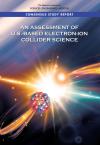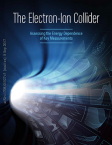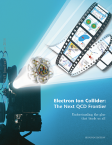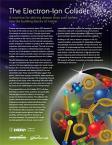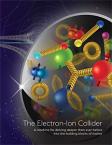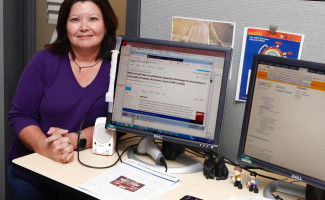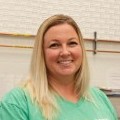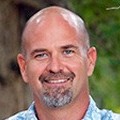Jefferson Lab’s Scientific and Technical Information Manager Credits Career to Eclectic Experiences and Interests
Kim Edwards, daughter of an USAF airman and Japanese mother, traveled often by car.
“Every time we changed duty stations, we drove from Point A to Point B, even if Point B was an airport to take us across an ocean,” Edwards remembered.
There was a something special about these coast-to-coast car travels, though. Her father, an admirer of natural science museums, would stop at every museum from Point A to Point B.
“Every podunk, obscure museum, we’d stop,” Edwards said, laughing. “My dad would stand in front of an artifact and stare for long minutes.”
Edwards developed an appreciation for science and the preservation of its ever-advancing pursuit of knowledge. Today, as Jefferson Lab’s Scientific and Technical Information (STI) Manager, she finds herself standing and staring at science, the same way her father did during all of those obscure museum visits.
“That’s who I am today too, I guess,” Edwards said, laughing.
Edwards’ journey to Jefferson Lab isn’t as simple as traveling from Point A to Point B. Instead, she said, “My background is as eclectic as my decorating style. As a whole, it put me on the path I'm on.”
Born at a U.S. Air Force Base in Japan, Edwards has lived in 10 cities, and she moved to the United States when she was four. As a young child, she dreamed of playing the flute professionally and studying under the world-renowned musicians of Juilliard. Her dedication and work ethic kept up with her passion, as she played flute in the band at Aliamanu Middle School in Honolulu and performed in the All-State Band.
After high school, Edwards joined the United States Army, where she began pursuing her college studies. Open to varying ideas for her future, Edwards started with studying English at the University of Maryland while she was stationed in Germany.
“I thought I wanted to be an English teacher,” she said. But then the Army transferred her to Fort Riley, Kansas, and she thought she could study accounting at Kansas State University, a natural progression since her Army job was 73C - Finance Specialist. It was an elective class - Forensic Anthropology - that stole her intrigue and curiosity. She enjoyed learning about the anatomical science of anthropology.
Her interests didn’t stop there. After she was honorably discharged from the army, she returned to Hampton Roads and finished a B.A. in Communication Arts with a minor in Business Administration from Christopher Newport University.
“See?” Edwards said. “Eclectic. I think all of these experiences and interests helped me to be adaptable and flexible.”
Being adaptable and flexible were exactly the qualities Jefferson Lab looked for in 2000 when they sought a Technical Information Specialist. Edwards applied for the job because, “I was tired of driving across the Hampton Roads Bridge Tunnel.”
That job, however, opened the door for Edwards to exercise her interest in science, her respect for record keeping, her discipline from the army, and her appreciation for language arts. Her first task was to streamline the publications process.
“So Publications Manager became my title,” Edwards said.
Ten years later, she received her certification in records management from the Institute of Certified Records Managers.
“So Certified Records Manager became my title,” Edwards said.
No matter the title, Edwards brought to her work all of her varied passions, backgrounds and experiences. Today, as the STI and Records Manager, she manages the Jefferson Lab History Archives Program, as well as ensures the lab stays compliant in the way records and scientific/technical information are managed.
For nearly two decades, Edwards has collected, reviewed, and protected scientific documents, artifacts, audio and video files. She has also played a critical role in developing processes for the archive program.
“I’m excited that a hundred years from now, historians and researchers will be using the Jefferson Lab History Archives to make new discoveries of their own and to share them in academic papers,” Edwards said.
Edwards is married to Kelvin Edwards, who leads the Systems Team in the Computing, Networking and Infrastructure department. They live with two cats and one recently adopted dog.
“We got a discount on her because she’s an older dog and had been at the shelter for months,” Edwards said, laughing.
If she’s not searching for funding for the archives program, or managing the submission of journal articles, or working on records accessions, she’s working on her Master’s degree at San Jose State University, updating her dog’s Facebook page or crocheting, a hobby she picked up from her grandmother in the 1970’s while they watched Hawaii Five-O or listened to Elvis records.
Edwards looks back on her life and her work with appreciation.
“When I’m 95 years old, I hope I will be one of those people who worked in the background to affect other people’s lives for the better,” Edwards said.
“And I’d also like to be able to remember what I ate for dinner.”





